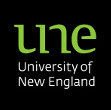Choosing Science
Page Index
Quick Links
| Project Title | Choosing Science |
| Project Team | Terry Lyons and Frances Quinn |
| Period | December 2007 - December 2009 |
| Funding Agency | SiMERR National Centre |
| Organisational Base | SiMERR National Centre with support from the Australian Science Teachers Association |
Description
The last two decades have seen significant declines in the proportions of high school students choosing senior physics, chemistry and biology courses in Australia. Concern has been expressed in many quarters about the implications of these declines for the supply of future scientists, the quality of the scientific endeavour in Australia and the levels of scientific literacy of its citizens. The Choosing Science study represents a large-scale national attempt to understand the influences on Year 10 students' decisions about taking science subjects in Year 11. The study was undertaken in two phases. In Phase One, 589 secondary school science teachers were surveyed to identify their perceptions about the enrolment declines and students' deliberations. Findings from this survey informed Phase Two, a survey of 3759 Year 10 students who had recently chosen their subjects for Year 11.
Findings
The study found that declines in the proportions of students taking physics, chemistry and biology are part of a broader phenomenon which has seen similar falls in many traditional subject areas, including economics, geography, history and advanced mathematics. This realisation, along with evidence from the teacher and student surveys, led to the conclusion that declines in science enrolments are most likely due to an interrelated set of factors centred on the changing context of subject choice for senior high school. The principal factor appears to be students' responses to the greater array of options available in Year 11, resulting in proportionally lower enrolments in many long-standing subjects. The context of greater choice has also heightened the influence of three contributing factors more closely associated with science education:
- the difficulty many students have in picturing themselves as scientists;
- the decrease in the utility value of key science subjects relative to their difficulty; and
- the failure of school science to engage a wider range of students.
Evidence from the study indicates that the following factors are unlikely to have contributed significantly to falling enrolments:
- declines in the level of interest in science among today's young people;
- students' perceptions that science careers attract relatively low pay;
- students' perceptions that it is difficult to find a job in science;
- students' experiences of primary school science.
Outcomes
- Lyons, T. & Quinn F. (2010). Choosing Science: Understanding the declines in senior high school science enrolments. Research Report to the Australian Science Teachers Association. UNE.
- Lyons, T. (2009). Understanding Australian students' decisions about science courses and careers. Invited presentation to the international symposium Vägar till och genom högre utbildning I naturvetenskap och teknik (Roads to and through higher education in science and technology). Faculty of Physics and Materials Science, Uppsala University, Sweden, 23 November
- Lyons, T. & Quinn, F. (2009). Australian students' decisions about taking non-compulsory science courses. Presentation to the Norwegian Centre for Science Education (Naturfagsenteret), University of Oslo, Norway, September 22.
Impact
The study makes 10 recommendations aimed at improving student engagement with school science and providing directions for further research.
Related documents
Click here to download this infosheet.
Click here to download the report.

